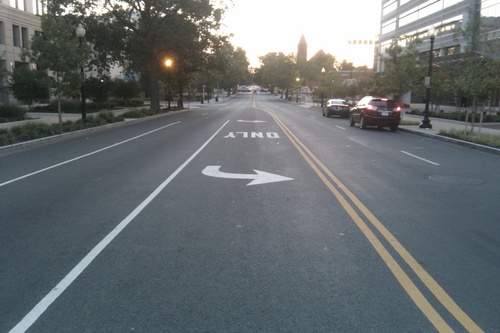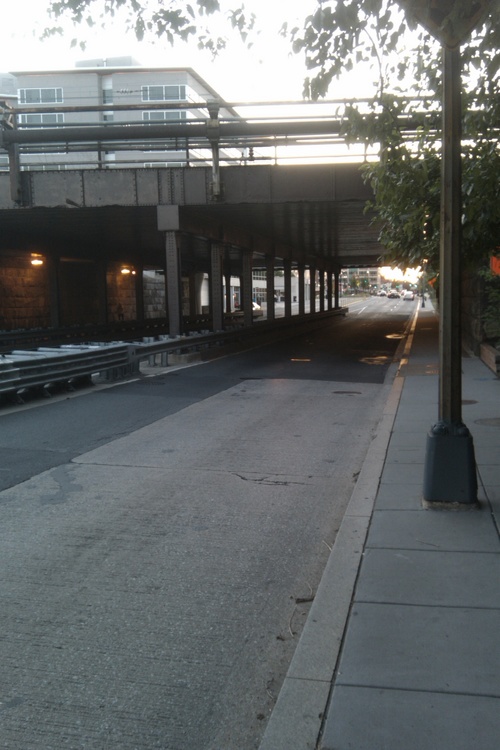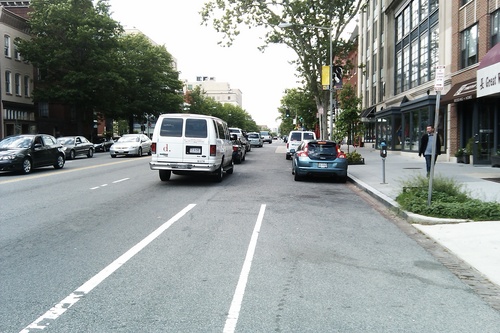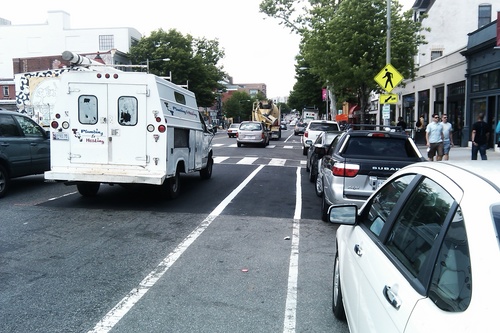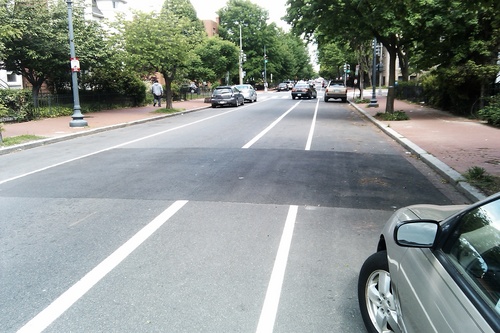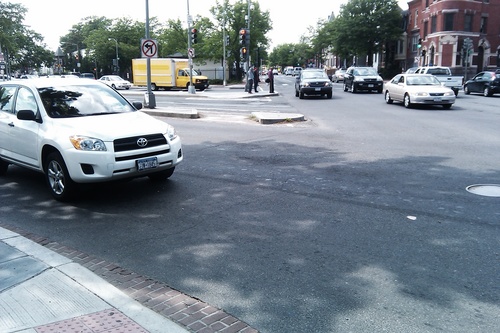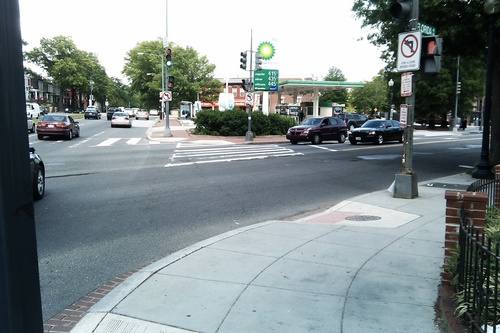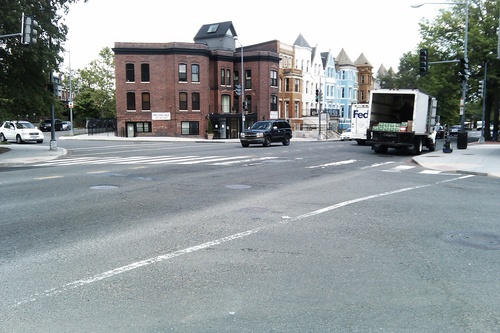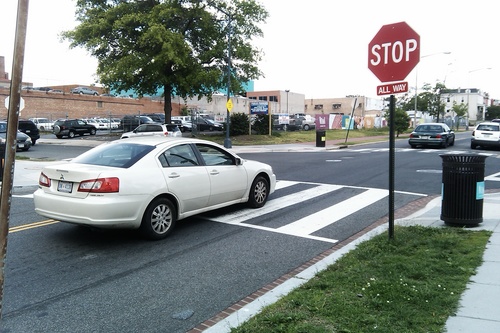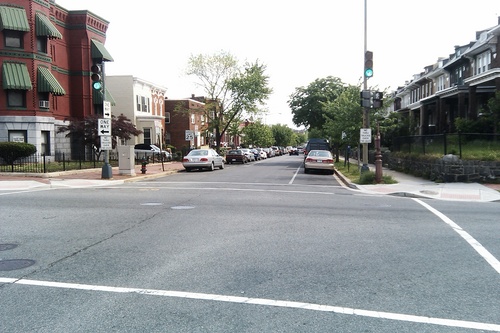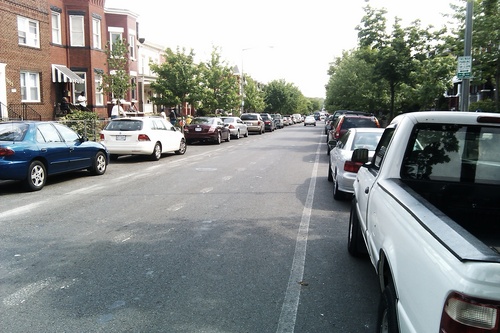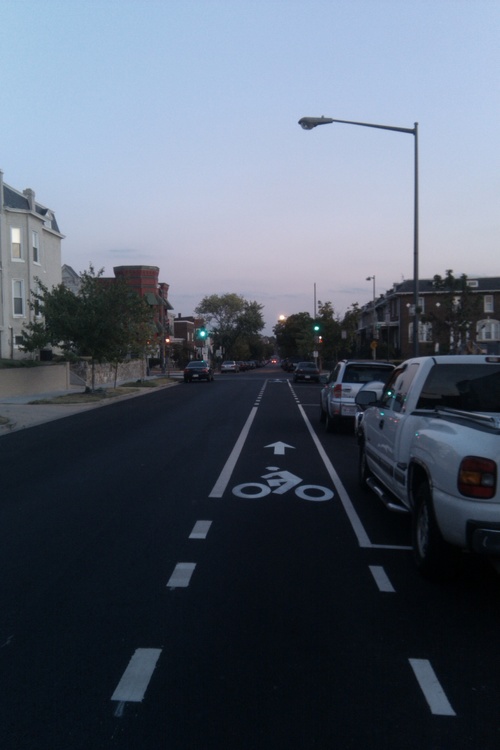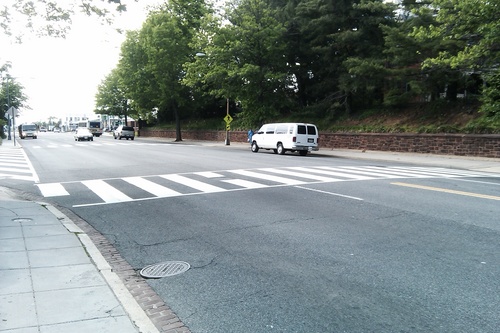Paint is cheap, but makes a big difference on roads

Photo by Steven Vance on Flickr.
The 11th Street Bridge Project has a pricetag of $300 million. DC’s new streetcar network will cost tens of millions of dollars. Transportation infrastructure is obviously expensive.
Not all the time, though. Sometimes, a couple gallons of paint can improve or create new transportation infrastructure as well. For as little as $8 a gallon, (plus labor costs), the streets can be made safer for the drivers, cyclists, and mass-transportation users who use them every day.
The following are a series of pictures taken over this summer. With just a little paint, roads can be vastly improved at a low cost. Unfortunately, DDOT often isn’t able to keep up on proper striping fast enough to ensure the roads are clearly marked.
Here’s a good example of a little paint making a better road. This is the unit block of K Street NE. There used to be two lanes each direction, but no dashed white stripes to let drivers know this. Drivers frequently drove down the center of their side of the road, effectively limiting this to a two-lane road. Traffic backed up terribly during rush hour, causing buses to take up to 10 minutes to traverse one block.
Now, it’s clear there are two lanes each direction, and a dedicated left-turn lane has been added at 1st Street NE. Traffic flows much more smoothly because it’s more clear where drivers can go. Could this be improved even more? There appears to be enough room to add bike lanes to the street in a future restriping.
Here’s an example of what that stretch of K Street was like before. This is the 200 block of Florida Avenue NE, under the rail overpass. There is enough room for two cars to pass through side-by-side here, but the lack of lane striping leaves some drivers unsure. They often end up straddling the two lanes, contributing to significant back-ups during rush hour at this location.
A little paint here would certainly help make it clearer how traffic should move through this bottleneck.
This is in front of the Matrix Condo building at 1529 14th Street NW. The building was completed in 2007. The parking lane at the right was blocked while the building was under construction. The bike lane couldn’t be completed with the fence that was in the way.
Nearly 4 years later, a gap remains. Without the visual reminder, cabs and delivery vehicles frequently double-park here, forcing cyclists out into the travel lanes.
Farther up 14th Street NW, in front of the City Paws veterinary offices, the road was dug up for utility work, and the bike lane was immediately repainted when the asphalt was replaced. Why was this project painted quickly while the one before has languished for years?
On T Street NW, just east of 14th Street, this utility patch was not properly repainted.
The intersection of Rhode Island and Florida Avenues NW was destroyed by plowing and road salt during the snowstorms of the winter of 2010 (Snowmageddon and Snowpocalypse). When the intersection was repaved, the crosswalks, lane striping, and stop bars were not replaced. The intersection is very busy, and that striping should have been replaced to make drivers aware that they should be alert for pedestrians.
Here’s another view of that intersection. Note how the crosswalk ends at the newer pavement.
The crosswalks at Florida Avenue and 4th Street NW were banged up by the severe winter as well, but have not been maintained.
Here’s an example of an intersection without a stop bar at 3rd and M Street NE. As you can see, automobiles don’t always stop where they’re supposed to — before the crosswalk. Since this picture was taken, a stop bar has been added, and traffic appears to be stopping before the crosswalk more frequently now.
4th Street, a one-way road southbound, has a bicycle lane from Florida Avenue NE all the way to M Street SE. Unfortunately, on the block from M Street NE to L Street NE, the striping has faded, and drivers tend to forget that cyclists have a right to be on the road as well.
On that block of 4th Street, the bike lane has completely faded away, and spilled paint has been tracked by an automobile tire down the middle of the street, making even more of a mess out of this block.
At the southern end of the block (4th and L and Streets NE), the dashed line delineating the bicycle lane can barely be made out in the picture.
North of M Street, though, the road was recently repaved. The fresh paint makes it absolutely clear that drivers should expect to see bicycles on this road.
Here’s another example of DDOT doing a good job with road striping. This crosswalk was incomplete for years, only extending across the westbound lanes of Florida Avenue (at M Street NE). The crosswalk was finally striped all the way through the eastbound lanes this spring.
One more example of missing infrastructure. At the corner of 7th Street and Florida Avenue NE, there is no crosswalk or stop bar for 7th Street traffic. Cars frequently stop where pedestrians should be crossing, forcing them close to speeding Florida Avenue traffic when crossing this intersection.
These images all show examples of how a little paint can go a long way towards making a street a safer place for all the people that use it. The good examples are not very different than the bad ones. They simply have had a few more dollars and a little attention paid to them.
Of course, even more could be done. Green paint for the bike lanes, for example, would make them even more visible. It would add more to our infrastructure at a minimal investment.

